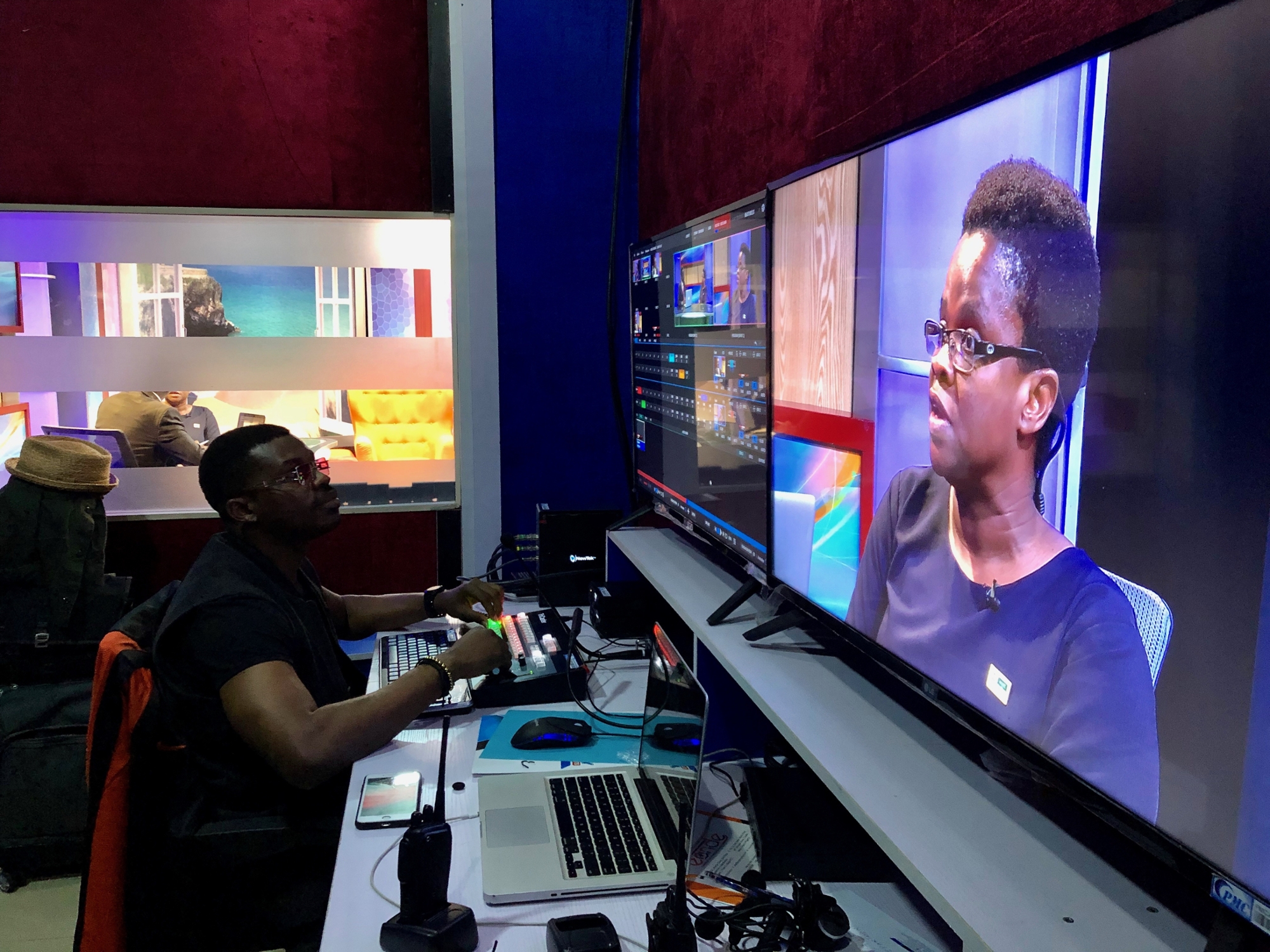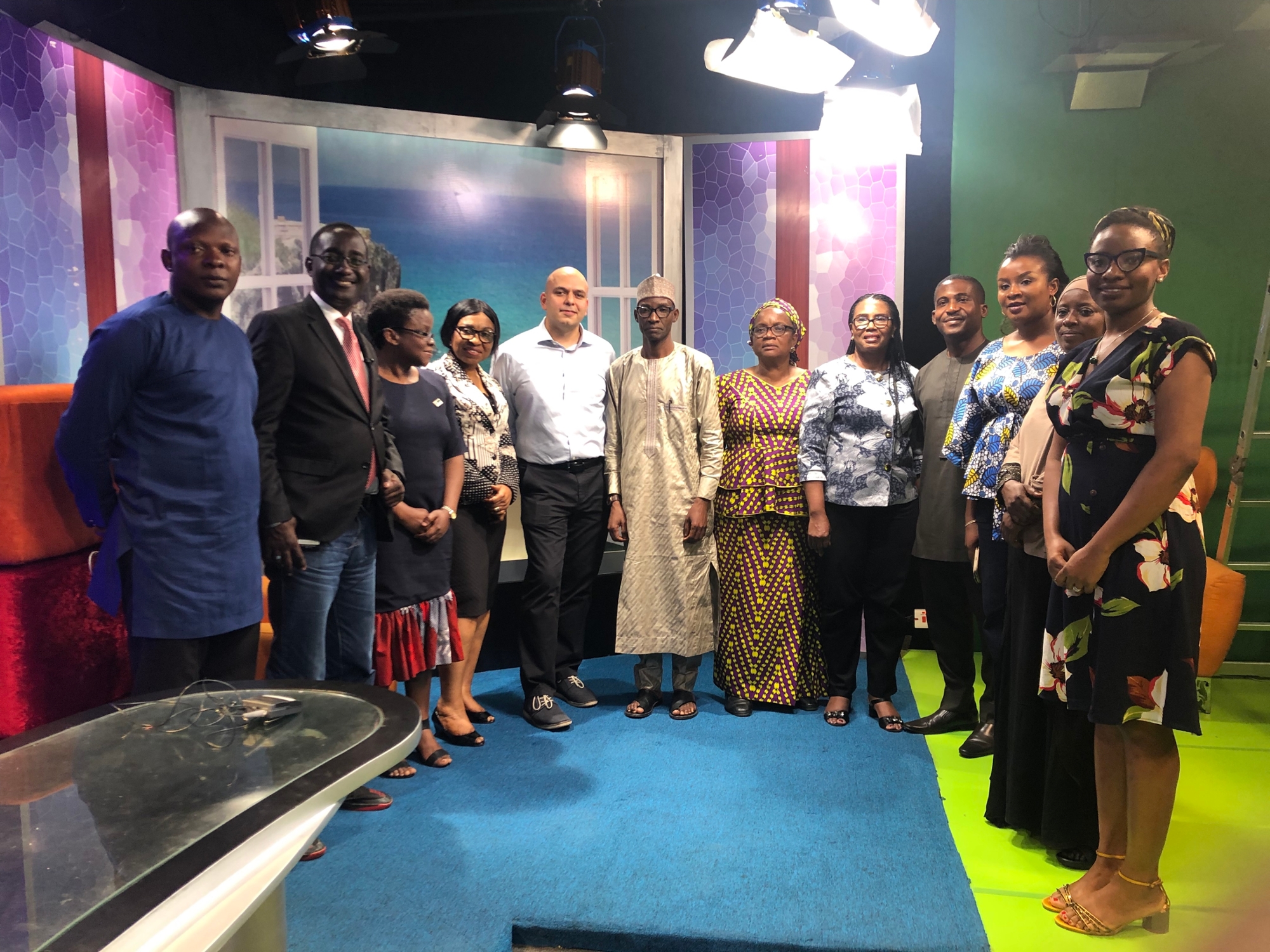Nigeria CDC Receives Media Relations Training
Andisheh Nouraee of the IANPHI U.S. Office, Ukwori Ejibe of the Tony Blair Institute, Jeremiah Agenyi of NCDC, and Abuja-based radio presenter and media consultant Stanley Bentu developed a curriculum to train senior leaders of Nigeria CDC on media relations strategies.

In August, IANPHI's new Atlanta-based director of communications Andisheh Nouraee co-led a week-long media relations and training workshop in Abuja for Nigeria Centre For Disease Control (NCDC). With the establishment of the NCDC Act in late 2018, Chief Executive Officer Dr. Chikwe Ihekweazu and other senior NCDC leaders wanted to bolster NCDC's ability to communicate effectively with the Nigerian public.
In June, Ukwori Ejibe of the Tony Blair Institute, Jeremiah Agenyi of NCDC, Abuja-based radio presenter and media consultant Stanley Bentu, and Nouraee began developing a curriculum for the workshop. The objective was for everyone in attendance to improve their ability and increase their comfort level with media relations, and for NCDC staff to complete the workshop with the collective ability to continue building its capacity.
Topics covered during the training included understanding the overall benefits of strong media relations for NCDC, the risks of weak media relations, mapping key media outlets and understanding the perspectives and motives of journalists. Nouraee and Bentu, who co-facilitated the session, also conducted a session on how staff and leaders should approach their personal social media accounts.
One of the most productive and energetic sessions was devoted to crafting media-friendly messages from source materials that are scientific, technical or filled with terminology that may not be easily understood by the media or a public audience. Using a Lassa fever outbreak in southeast Nigeria as the practical subject matter, the facilitators and NCDC created new messaging materials during two one-hour sessions designed to mimic a typically hurried preparation for a media interview. This was followed up with practice interviews, where nearly all staff were subjected to probing interviews for radio and print. Each practice interview was recorded and played back to the entire group for constructive critique.

The third day of the training, led by Bentu, took place in a television studio. Each participant was interviewed on-camera, with Bentu playing the role of an aggressive, occasionally antagonistic interviewer. After each interview, the participants gathered for a playback session and group critique.
The group practice and critique format worked well in large part because of the collegial nature of NCDC staff. The group coached and critiqued one another, supported one another and had fun together. Each person benefited from the experience of the person who went before them. It also allowed the communications team at NCDC to hear their talking points and key messages aloud, which in-turn prompted on-the-spot edits and improvements to the NCDC's messaging.
After the workshop was completed, Nouraee recommended that NCDC staff who participated in the session meet regularly to create or refine its written messaging documents. He recommended NCDC schedule the process to prioritize likely topics of media inquiry. Most topics of media inquiry, in particular topics related to endemic or seasonal diseases and illnesses, are predictable and can be planned in advance. Developing strong written, foundational documents for communications makes responding to media quicker and less-prone to inaccuracy.
The following worksheet was used during the workshop to help prepare messaging before an interview.
Communications objective:
What are we trying to achieve with the information in this document?
Authorized spokespersons:
Names, titles, email, contact information of everyone who is assigned to communicate with the media or public about an issue.
Background:
Explain the issue (ex. a summary of the outbreak, its geographic scope, how many people are impacted) in a paragraph or two.
Communications risks:
What are the risks of communicating on this topic with the media? Also, what are the risks of NOT communicating on this topic?
Posture:
Decide if your objective is best-served by communicating proactively, or by waiting to react to a media inquiry?
Reminder of Standard Operating Procedure for this particular Issue:
Write out the decision making process for creating, approving and updating these talking points, including names and contact for relevant leadership and technical experts.
Talking Points:
What are the key messages we want to convey, in order of importance? Radio and television news stories are typically very short, so it's essential that you deliver your most important messages first, clearly and often.
Questions and Answers:
The same information as above, but presented in Q&A format.
Message House:
The message house is a graphical format for organizing and memorizing key messages. It's a very helpful tool for paring down a large amount of information into priority items. Forcing yourself to organize messages into the message house format will help you choose and deliver the most important messages to deliver during time-constrained interviews.
What questions do we fear being asked?
Imagine the most difficult interview situation - the questions you dread being asked - and try to prepare for them.
Responsibility:
Who is responsible for keeping the technical information in this document up-to-date?
This article was published in IANPHI Insider #4 (November 2019).